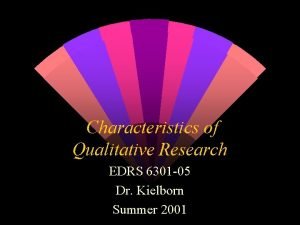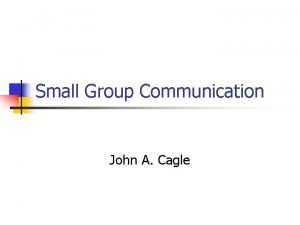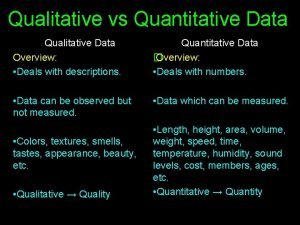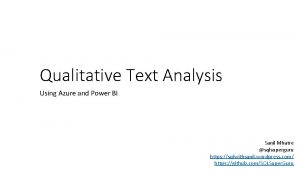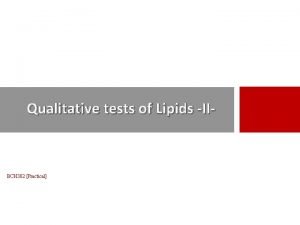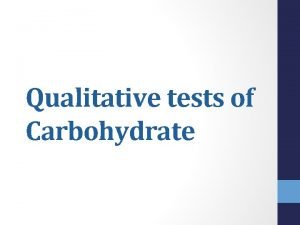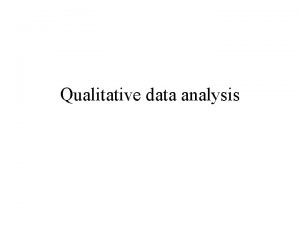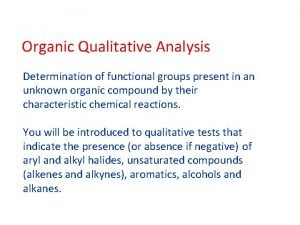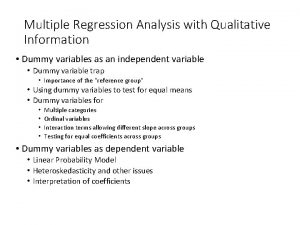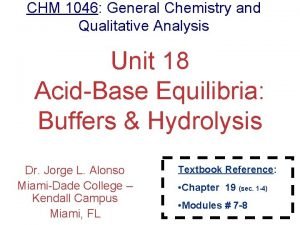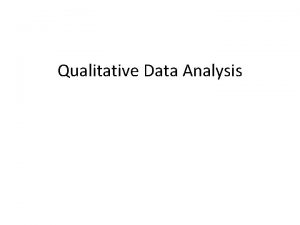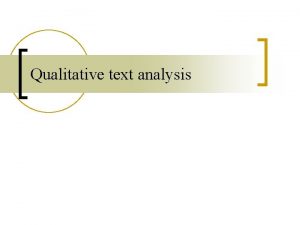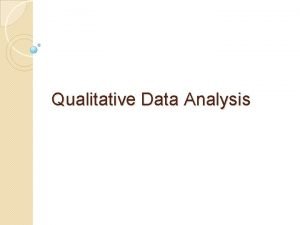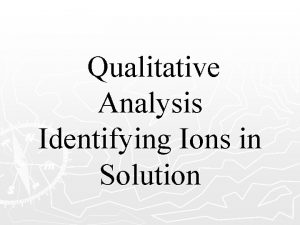NucleonNucleon interaction qualitative analysis Characteristic radius r fm
















- Slides: 16

Nucleon-Nucleon interaction (qualitative analysis) Characteristic radius r (fm) b=1. 4 fm QCD! V(r) OPEP+pg p breaks isospin + TPEP+… (energy dependent…) quark-gluon structures overlap poorly known; experimental data are not sensitive to large momentum transfer w heavy mesons

Nucleon-Nucleon interaction Scattering Analysis pp, nn scattering in T=0, 1 channels • pp scattering easy • neutron beams (np, nn) and neutron targets (pn, nn) difficult 7 Li(p, n), reactors short neutron lifetime (~10 min) deuteron - a substitute (pp and 3 N effects have to be subtracted); Scattering Cross Section k k’ z elastic scattering; the same value of k! valid for short-ranged potentials (V=0 at large r) Coulomb contribution is removed

Nucleon-Nucleon interaction Partial-wave decomposition For scattering off a short-ranged potential, it is useful to carry out a partial-wave decomposition. phase shift The probability current density in each partial wave is conserved - unitarity (valid only for elastic scattering!). The partial wave decomposition is very convenient at low energies since only a few terms enter the expansion. potential range For pn scattering (potential range 2 fm) and low momenta (<400 Me. V/c), the swaves dominate. The phase shift d 0 is decisive for nuclear binding. 2 S+1 L J For momenta > 400 Me. V/c the phase shift is negative. This indicates that the nuclear force is repulsive at short distances!

Nucleon-Nucleon interaction Partial-wave decomposition hard core attractive square well

Nucleon-Nucleon interaction (phase shift analysis) V (Me. V) 1 S 0 1 D 2 The realistic NN potential is a function of the total spin S of the two nucleons. The conserved quantity is To determine S (=0 or 1) one needs polarization data! 1 S 0 3 S 1 Paris potential

Nucleon-Nucleon Interaction Realistic NN forces Selected Phase Shifts with V 18

Nucleon-Nucleon interaction (inelastic scattering) With sufficient energy, scattering can excite the internal degrees of freedom of the nucleons: can produce secondary particles: or baryon-antibaryon pairs: Since the mass of the pion is about 140 Me. V, pion production takes place above this threshold. Inelastic scattering represents a loss of flux in the incident channel, hence the probability amplitude is no longer conserved. Such a situation may be described by a complex scattering potential.

Nucleon-Nucleon interaction (Scattering length and effective range) At low energies, the total cross section remains finite for NN scattering length is positive if there is a bound state effective range

Nucleon-Nucleon interaction Deuteron Binding energy 2. 225 Me. V Spin, parity 1+ Isospin 0 Magnetic moment m=0. 857 m. N Electric quadrupole moment Q=0. 282 e fm 2 produced by tensor force! kinetic energy is comparable to the depth of the potential rms radius=1. 963 fm

Nucleon-Nucleon Interaction NN, NNNN, …, forces GFMC calculations tell us that: short-range three-body N-body forces scale as: naturalness!

Nucleon-Nucleon Interaction Realistic NN forces Deuteron Structure Functions with V 18

Nucleon-Nucleon Interaction Realistic NN forces Deuteron Shapes with V 18 http: //www. phy. anl. gov/theory/movie-run. html

Nucleon-Nucleon Interaction Realistic NN forces One-body Densities

Nucleon-Nucleon Interaction Realistic NN forces Two-body Densities

Few-nucleon systems (theoretical struggle) A=2: many years ago… 3 H: 1984 (1% accuracy) • Faddeev • Schroedinger 3 He: 1987 4 He: 1987 5 He: 1994 (n-a resonance) A=6, 7, . . 10: 1995 -2002

Few-nucleon systems (theoretical methods) Green’s Function Monte Carlo (imaginary-time method) Trial wave function (taken from VMC) Other methods: • • • Faddeev-Yakubovsky method Hyperspherical harmonics method Coupled-cluster expansion method, exp(S) Cluster approaches (resonating group method) No-core shell model Molecular dynamics
 Atomic radius increases from left to right
Atomic radius increases from left to right Discuss the characteristics of qualitative research
Discuss the characteristics of qualitative research Characteristics of qualitative research
Characteristics of qualitative research John dewey’s reflective thinking model
John dewey’s reflective thinking model Holistic data collection
Holistic data collection Group studied is smaller and not randomly selected
Group studied is smaller and not randomly selected Example of quantitative data
Example of quantitative data Power bi qualitative analysis
Power bi qualitative analysis Quantitative test for lipids
Quantitative test for lipids Benedict's test mechanism
Benedict's test mechanism Principles of qualitative data analysis
Principles of qualitative data analysis Qualitative analysis of organic functional groups
Qualitative analysis of organic functional groups Multiple regression analysis with qualitative information
Multiple regression analysis with qualitative information General chemistry with qualitative analysis
General chemistry with qualitative analysis Data analysis qualitative
Data analysis qualitative Qualitative analysis skills
Qualitative analysis skills Quintic biomechanics software free download
Quintic biomechanics software free download


